Wisconsin Aluminum Foundry Shifts Gears on Retention
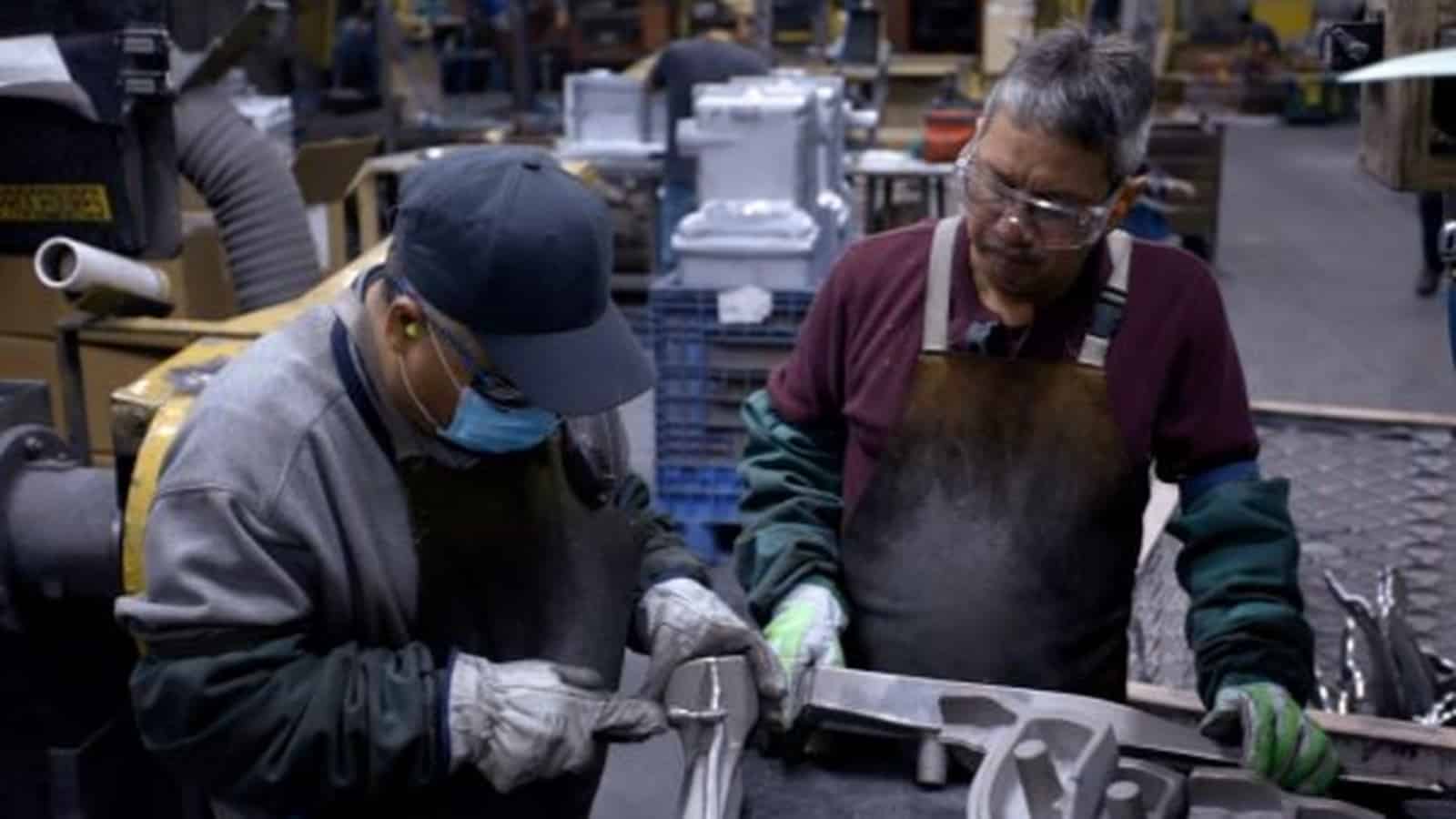
Wisconsin Aluminum Foundry CEO Sachin Shivaram knew something had to change. It was 2021, and at one point that year, the turnover rate of new hires for his foundry’s finishing department reached 100%, hurting its on-time delivery rate to customers.
He was facing a business challenge that many manufacturers consistently cite as their number-one issue: workforce retention, along with recruitment.
Finding a solution: Tackling the issue required looking at all facets of WAF’s operations, including onboarding and training of new hires.
- “What we found was we weren’t giving employees the proper environment to train on a new job,” said Shivaram. “We were putting them on the shop floor and telling them to learn while you work.”
- This finding was underscored by a conversation Shivaram had with one of his employees, who had been with WAF for 25 years.
- “He said when he first joined, he had no idea what he was doing in the first six months,” said Shivaram. “He would clock in and just watched what other people were doing and tried to get by and be productive. He didn’t speak the language and just stuck it out. And I thought to myself, with that sort of confusion among new employees, they will just stop coming.”
Fast Forward grant: Recognizing that WAF needed to train new hires without burdening experienced employees or slowing down its operations, the company applied for a Fast Forward grant through the Wisconsin Department of Workforce Development in October 2021.
- Thanks in large part to the $194,000 it received, WAF created a training center where entry-level employees can learn foundry basics, gain finishing and production skills, improve their understanding of customer specifications and acclimate to the physical demands of the job.
- For employees whose first language is not English, the center provides full-time translators who speak Spanish or Hmong. The foundry also pays for English classes if employees want to take them.
The result? To date, WAF’s new hire turnover rate has dropped from 100% to 15%—an astonishing improvement.
Other benefits: For Shivaram, meeting the company’s retention challenge also means supporting employees “through their career cycle.”
WAF’s starting wage is roughly $25 an hour, plus a $1.25 shift premium. The foundry offers incentive plans, which give employees the opportunity to earn up to 5% additional pay. In addition, WAF pays $400 a month to anyone with young children to offset their expenses for child care—not just for formal day care but any child care expense.
- “We have about 100 parents on that program, and that is huge,” said Shivaram. “People consistently mention to me that is a reason why they stay with us.”
Education: Shivaram notes that for anyone who wants to go back to school, even if it’s not exactly related to their career path, WAF supports that and will pay for part of it.
Feedback: While WAF performs annual employee surveys across all departments to garner feedback, as well as formal check-ins, Shivaram says that informal engagement—whether it’s participating in a company-wide event, such as a golf outing or pizza party, having lunch with an employee or just catching up with someone while walking through the plant—is really what gives him a pulse on the foundry.
- “Informal engagement helps people feel valued because they feel like they have a connection with someone—a friendship even. That is hugely powerful,” he noted.
The last word: The Wisconsin Department of Workforce Development recently recognized WAF for its workforce retention efforts—particularly its retention of minorities and women, who had been underrepresented at the foundry.
- That’s no longer the case, Shivaram pointed out proudly—minorities now make up about 10% of WAF’s workforce, and the foundry now has 40 women on the shop floor.
- “Improved employee retention has had a direct impact on the success of our business and our customers. It’s nice to have someone validate that we’re on the right path,” he concluded.
A New Project Translates Military Experience for Manufacturing Employers
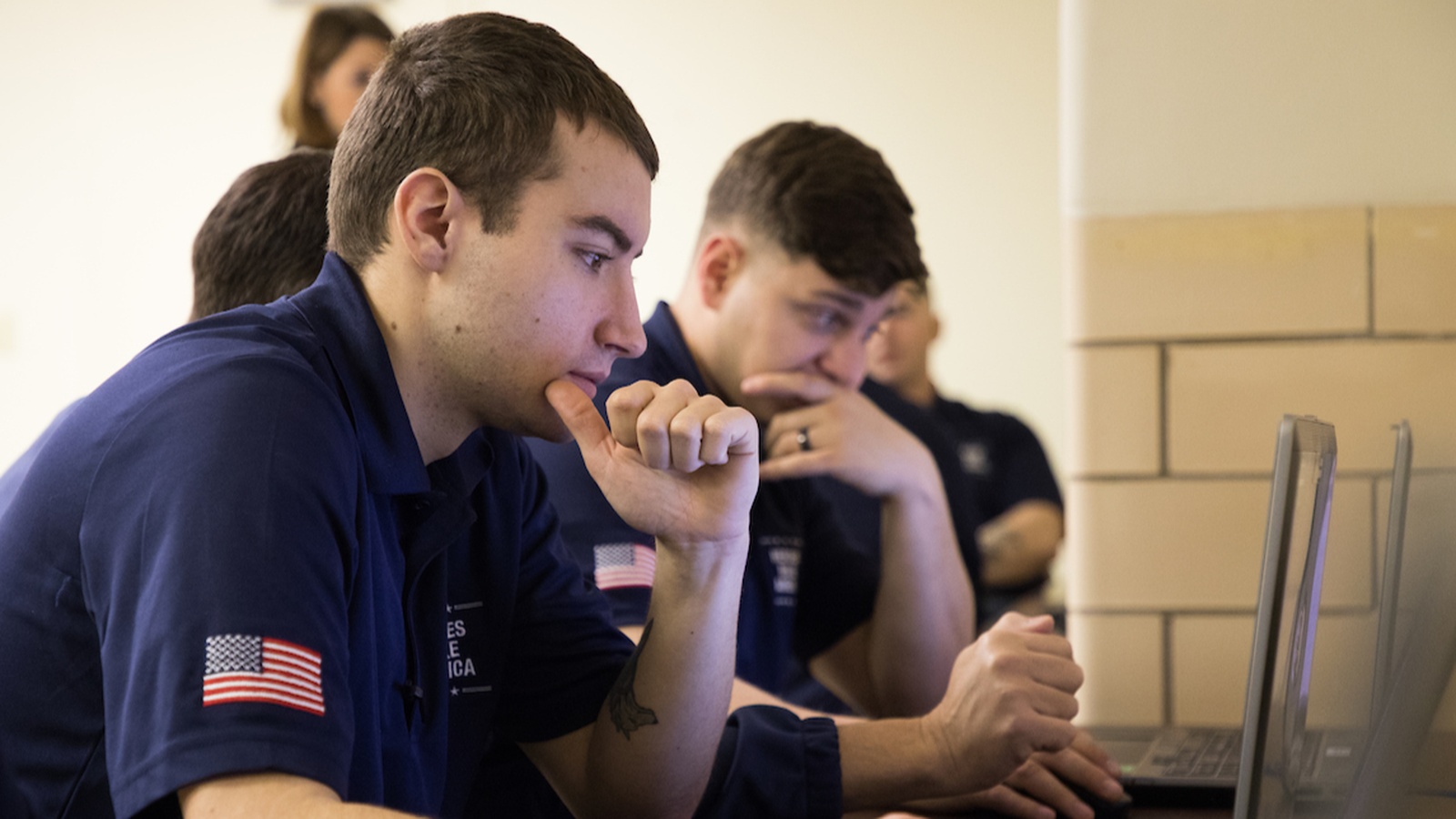
Manufacturers have long sourced great talent from the military community, helping transitioning and former military members apply their skills to America’s most pressing manufacturing challenges.
Through the Manufacturing Readiness Project, the Manufacturing Institute is now making it even easier for military veterans to find excellent civilian careers—and for manufacturers to build an outstanding and talented workforce.
The project: The Manufacturing Readiness Project aims to make military experience comprehensible to civilian employers via a digital credentialing system.
- Military servicemembers are awarded digital badges—stored in digital wallets—based on their military occupation and the training they received, giving both them and future employers a clear way to understand how their military experience prepared them for a career in manufacturing.
The details: The badges include a range of certifications in areas like general safety, general quality and general maintenance.
- Each badge includes a number of additional micro-badges signifying levels and types of achievement. General safety, for example, includes micro-badges in fields like workplace safety, environmental inspections and emergency response.
- These badges are also aligned with more than 300 military occupation codes across all five branches of the military, thereby translating military experience into terms that civilian employers will recognize.
What it means: For the MI, the workforce development and education affiliate of the NAM, this project represents a critical opportunity to expand the military-to-manufacturing pipeline.
- Currently, the MI’s Heroes MAKE America program trains transitioning military personnel in manufacturing skills and works to connect veterans to opportunities in manufacturing.
- The Manufacturing Readiness Project will enhance this effort by providing an avenue for veterans and transitioning personnel to highlight their military experience and enter the MI’s military-to-manufacturing pathway.
Why it matters: This initiative is one of the first of its kind to combine the use of the newest labor market technology tools—Learning & Employment Records, digital badges and digital wallets—to help workers find employment.
- This project is designed to be scalable across military occupations and civilian industries, thus opening the door to a broader range of servicemembers, veterans and employers.
What to expect: The pilot launched on Nov. 13—and within the first few weeks, more than 400 total badges have been awarded to transitioning and former servicemembers.
- So far, the initiative has received vital support from a range of organizations, including Solutions for Information Design, Jobs for the Future, Hire Heroes USA, the Manufacturing Skill Standards Council and Walmart. Following the pilot, the MI looks forward to seeking even more partners across the industry.
Learn more: For more information about the Manufacturing Readiness Project and the MI’s Heroes MAKE America program, please contact [email protected].
A New Project Translates Military Experience for Manufacturing Employers

Manufacturers have long sourced great talent from the military community, helping transitioning and former military members apply their skills to America’s most pressing manufacturing challenges.
Through the Manufacturing Readiness Project, the Manufacturing Institute, the workforce development and education affiliate of the NAM, is making it even easier for military veterans to find excellent civilian careers—and for manufacturers to build an outstanding and talented workforce.
The project: The Manufacturing Readiness Project aims to make military experience comprehensible to civilian employers via a digital credentialing system.
- Military servicemembers are awarded digital badges—stored in digital wallets—based on their military occupation and the training they received, giving both them and future employers a clear way to understand how their military experience prepared them for a job and a career in manufacturing.
The details: The badges include a range of certifications in areas like general safety, general quality and general maintenance.
- Each badge includes a number of additional micro-badges signifying levels and types of achievement. General safety, for example, includes micro-badges in fields like workplace safety, environmental inspections and emergency response.
- These badges are also aligned with more than 300 military occupation codes across all five branches of the military, thereby translating military experience into terms that civilian employers will recognize.
What it means: For the MI, this project represents a critical opportunity to expand the military-to-manufacturing pipeline.
Read the full story here.
How One Manufacturer Is Building a Local Talent Pipeline
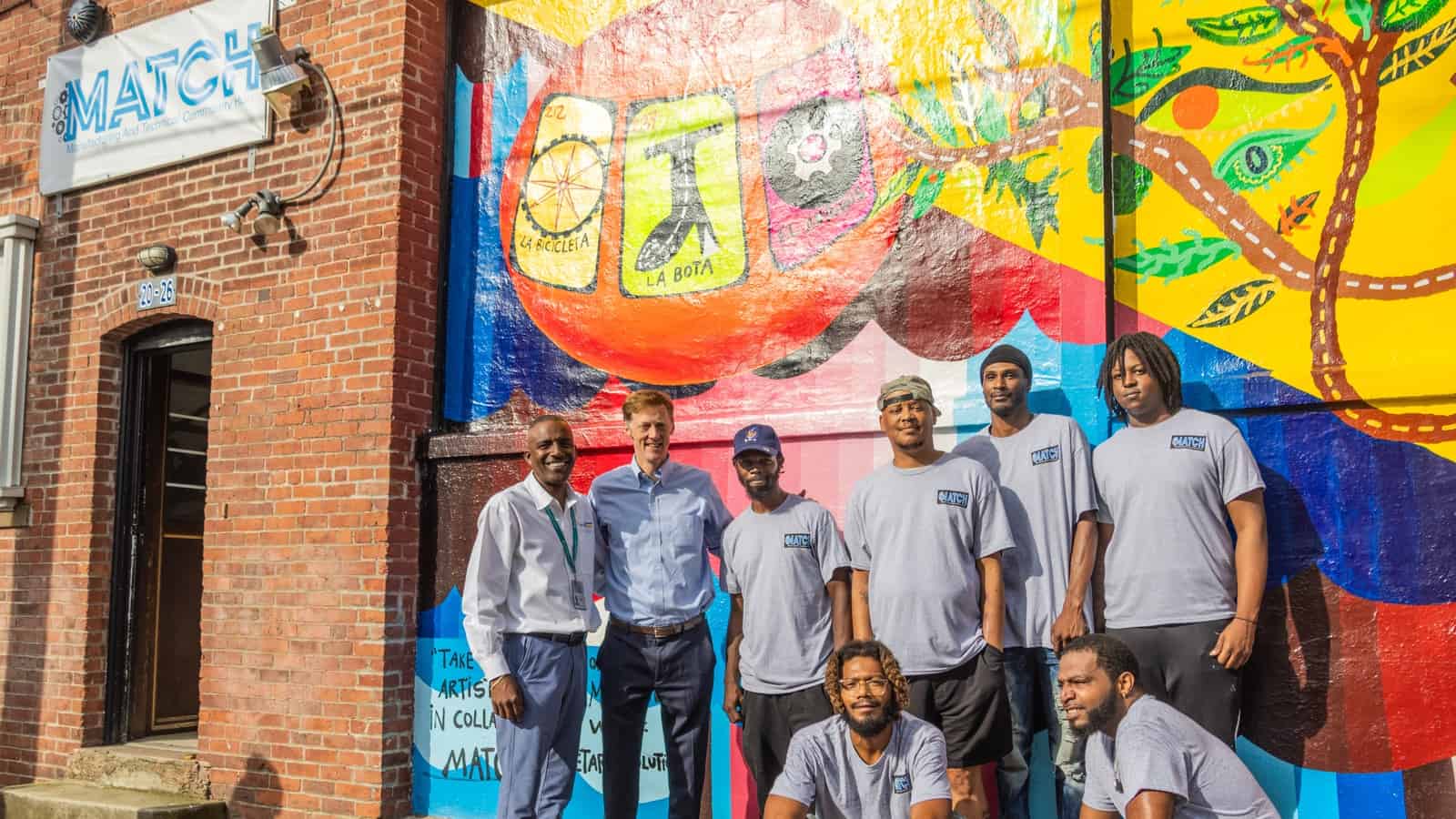
The president of Connecticut-based outdoor lighting manufacturer Penn Globe recently oversaw the launch of a long-awaited passion project: the Manufacturing and Technical Community Hub, or MATCH, a New Haven, Connecticut–area nonprofit contract manufacturing organization and training program designed to fill job openings in the sector.
Seeing a need: “I am a manufacturer, and one of the things I saw missing from the various workforce training programs available was the manufacturers themselves,” LaFemina said. “They weren’t reaching [the participants] in these training programs. So I was a bit frustrated, but that frustration was good … because it led us to create a program with manufacturers training people for actual manufacturing jobs.”
- In 2021, LaFemina and MATCH co-founder Lindy Lee Gold, senior regional manager of the Connecticut Department of Economic and Community Development, secured funding from partners including Lee’s agency, the city of New Haven, the Connecticut Department of Labor and numerous nonprofits.
- This past June, after LaFemina—now MATCH board chair—and the rest of the organization’s board of directors signed a lease on a building, MATCH was born.
How it works: MATCH begins with a two-week, earn-as-you-learn program, offered in both English and Spanish.
- The organization offers training in everything from basic welding to CNC machining, allowing participants to choose the type of manufacturing that interests them most.
- Then, depending on the complexity of their chosen specialty, they may spend up to six additional weeks in paid, on-the-job training before being placed in jobs with local manufacturers.
Meeting the moment: Unlike job-training offerings that expect a certain level of familiarity with an industry, MATCH starts from scratch.
- “Some places say, ‘Let’s test you on something you know nothing about,’” LaFemina told us. “We want to meet the moment. … We’re asking you to come in, give us two weeks and we will pay you minimum wage for the time that you’re here learning.”
- “We’ll figure out what you like and what you’re good at, and as long as we have the workload to make things, you’ll have a job,” she continued.
Being accessible: MATCH also prides itself on seeking out potential employees, instead of waiting to be found.
- “We wanted a building in a specific neighborhood in New Haven,” LaFemina said. “It’s where the majority of the social agencies are, the immigration services, the reentry services. I’d been hearing for two years about how people have [training] programs but couldn’t get participants because [the program locations] were difficult to get to. This one isn’t.”
Family friendly: One of MATCH’s main goals is to reach parents, many of them women, who have left the workforce due to difficulty securing child care. The program’s core hours are 9:00 a.m. to 2:00 p.m., Monday through Friday, in sync with those of most schools.
- MATCH partners are already considering using the program’s New Haven facility as a training site for day care providers, to help alleviate the shortage of workers in that sector.
- In addition, the program’s first cohort of students came from the New Haven Healthy Start’s Fatherhood Involvement project, one of several local initiatives with which the organization has ongoing relationships.
What’s next: MATCH is on track to be financially self-sustaining in three to five years—and LaFemina predicts big growth after that.
- “I see multiple MATCHes down the road,” she said. “There’s already a call for more. My biggest goal is in a few years all of us older people, who leveraged our connections to make this happen, will turn it over to a younger group that will turn it into something even better than it already is.”
How Manufacturers Can Benefit from Military Talent
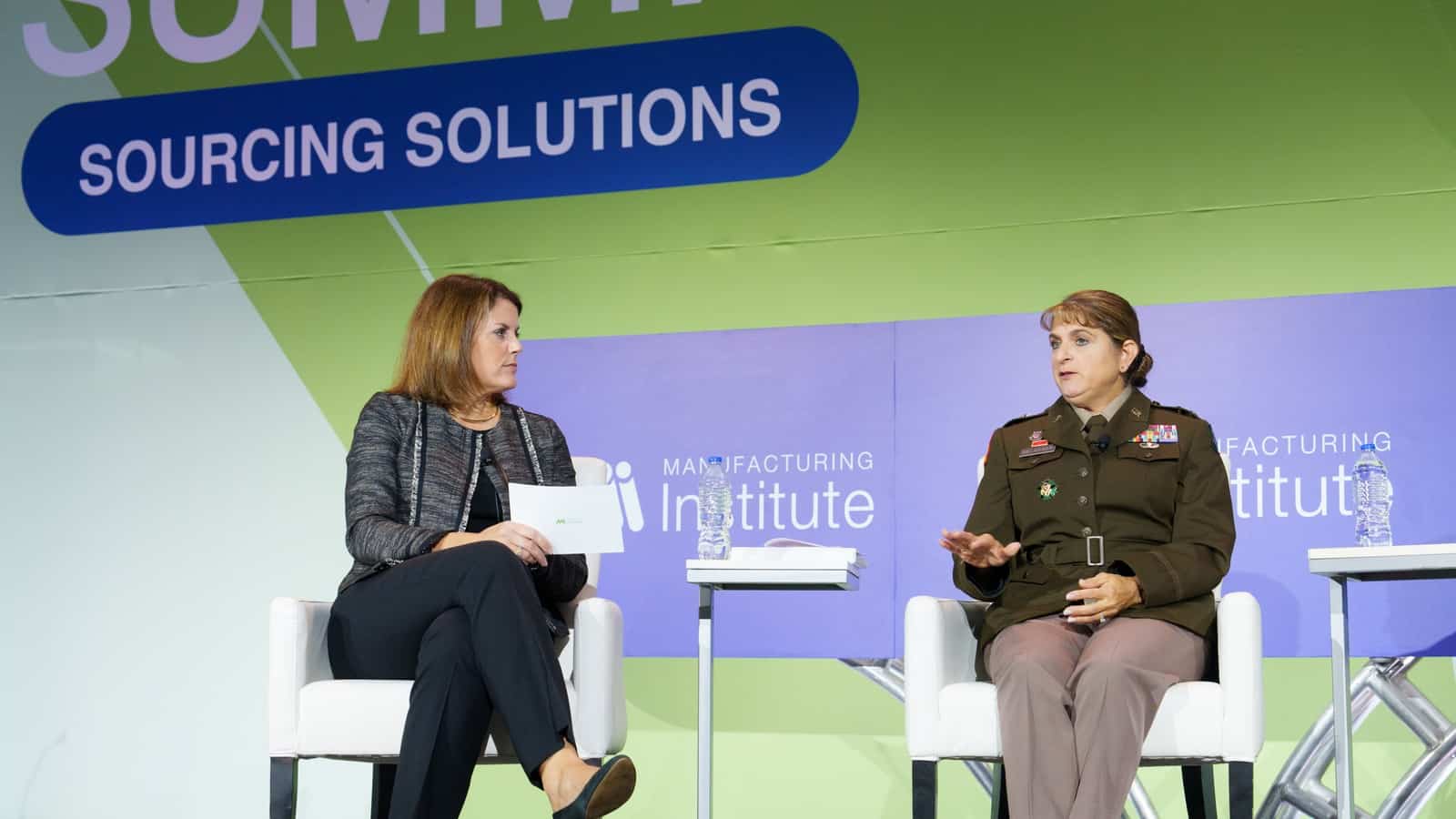
Looking for committed, disciplined employees to add to your workforce? In honor of Veterans Day, we’ll be highlighting how recruiting military talent—whether transitioning service members, veterans, National Guard members, reservists or military spouses—can help manufacturers address structural workforce shortages.
A productive match: At the Manufacturing Institute’s annual Workforce Summit in October, Maj. Gen. Kris A. Belanger, commanding general of the 99th Readiness Division, Army Reserve, spoke about the results manufacturers and military talent can achieve by working together.
- “The military offers diverse talent, very diverse. There are lots of ways that our training, roles and responsibilities overlap with those in manufacturing. Hiring military talent is a win–win situation,” she emphasized.
Making connections: During the “Leveraging Military Talent to Source an Essential Workforce” breakout session, MI National Director of Military and Veterans Initiatives Amy Thomas discussed how manufacturers can widen talent pipelines to include those affiliated with the military.
- “The Heroes MAKE American initiative trains and support military talent as they find a new career that utilizes their military training and experiences,” she said.
- “Since 2018, Heroes MAKE America has issued more than 6,000 industry-recognized certifications, achieved a 90% placement rate among graduates in more than 350 companies in 48 states and has shared information about manufacturing careers with more than 12 million individuals from the greater military community through social media, [Department of Veterans Affairs] newsletters and virtual and in-person industry events,” she continued.
Dive deeper: In addition to the Workforce Summit sessions, the MI held a Solution Series workshop in July to help manufacturers connect with military talent. The workshop offered manufacturers practical, actionable advice.
- For example, manufacturers should make sure the requirements listed in position descriptions are truly required for successful fulfillment of that role’s responsibilities, so that candidates coming from nontraditional backgrounds (such as military service) know they are welcome to apply.
- Companies should also make sure they know what military ranks and designations mean in terms of skills. They can go to the Civilian Leadership Equivalency Handout for guidance.
- For more tips, check out the MI’s Top 10 Solutions to Connect with Military-Affiliated Talent.
The last word: In conversation with Maj. Gen. Belanger, MI President and Executive Director Carolyn Lee noted, “With nearly 200,000 service members transitioning out of the military each year, the MI realized this was an opportunity to tap into that talent pool, teach them about manufacturing and bring them into our industry. That’s what makes our HMA program so exciting. We’re building those connections and providing those solutions.”
Get involved: Interested in learning more? Join the HMA team on Nov. 20 from 3:30 p.m. to 4:30 p.m. EST to learn how manufacturers can get involved in the program and benefit from this talent pool.
Thermo Fisher Scientific Opens Doors—and Career Paths—to Students on MFG Day
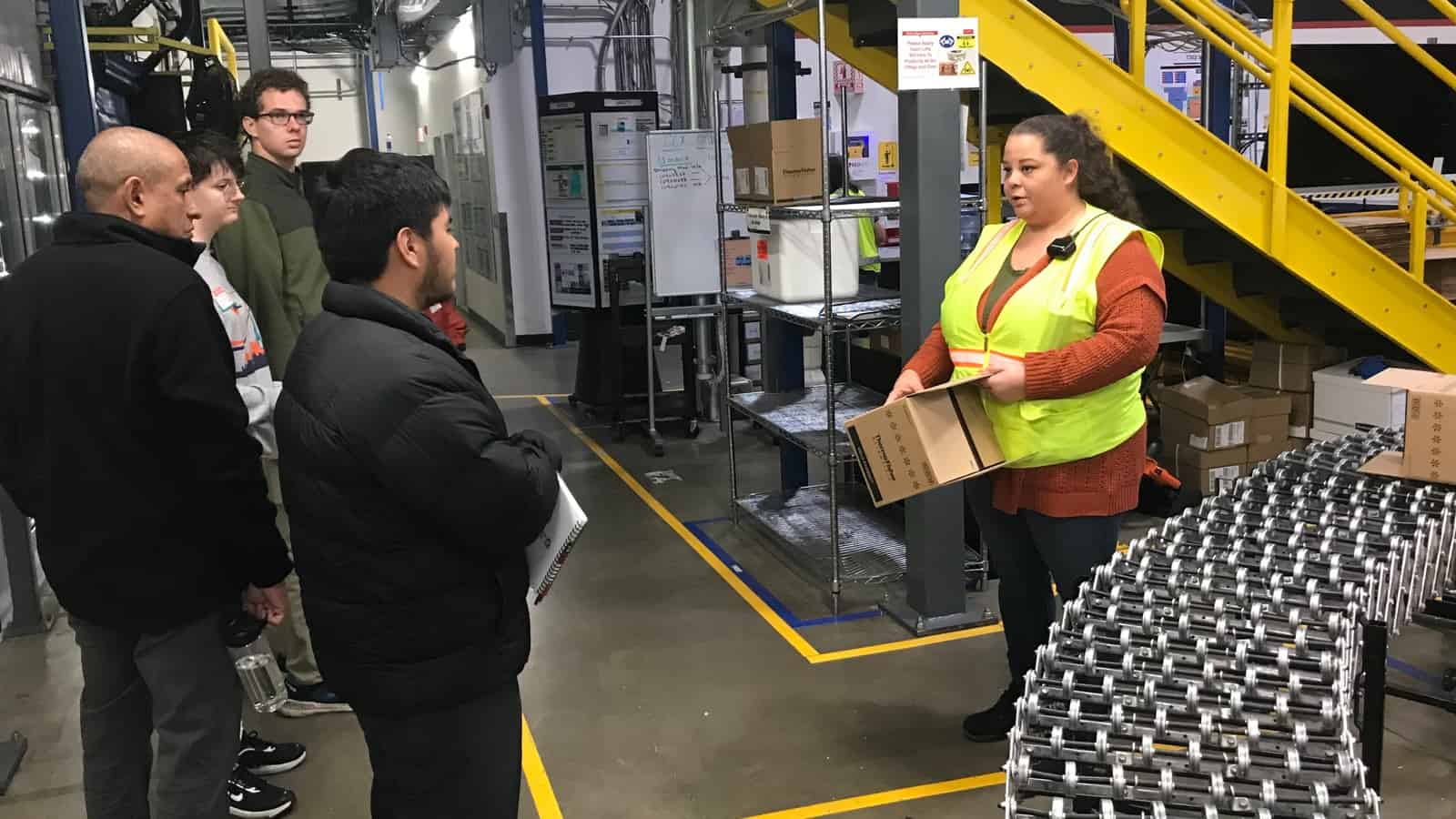
If you’re a jobseeker, Thermo Fisher Scientific wants you to know there are a plethora of job opportunities available at the company whether you have a science or engineering background or not.
At a well-attended MFG Day event for college students at its Frederick, Maryland, campus in October, both attendees and current employees said they were amazed to learn of the wide array of positions available at Thermo Fisher, a maker of life-sciences solutions and equipment.
Choose your own (career) adventure: “There’s a lot of opportunities here,” said Jude Ankrah, a cyber security engineer at the company’s Frederick location and one of the MFG Day’s event ambassadors, who helped lead student tours. “You can … make your own opportunities. There’s so much [internal] career movement. And it’s so flexible.”
- The MFG Day event drew about 60 students from four local colleges. It consisted of tours of the site’s distribution center, research-and-development cell biology building and corporate infrastructure and security center.
- Juan Argueta, who is working toward a cybersecurity degree at Frederick Community College, said he hadn’t expected the life-sciences giant to need people with his expertise.
- “I found out about it at school. I checked [the website], and there are actually a lot of openings in cybersecurity here,” Argueta told the NAM. “So I decided to come. There are so many great benefits [at Thermo Fisher]—including tuition reimbursement—for employees.”
Science not required: It’s a widely held misconception that people working at Thermo Fisher are all scientists and engineers, said Lisa Sweeney-Walker, senior executive assistant to Chief Scientific Officer Dr. Karen Nelson.
- “You don’t have to have a Ph.D. [or even] a science background” to get hired at Thermo Fisher, she said. “We have human resources, we have warehousing positions, we have other things.”
- In fact, the Frederick campus’s largest number of job openings is in manufacturing and distribution, said Frederick Site Leader and Senior Director of Manufacturing Operations Keith Howell, who spoke before the site tour. “We need both college-educated and non [degree-holding] hires,” he said.
Great strides: Thermo Fisher is doing some amazing things in science—and MFG Day attendees were able to watch some of its operations through interior windows at the R&D cell biology building.
- There, chemists are working to create “shells” for the next mRNA vaccines, Thermo Fisher Director of R&D David Kuninger told event attendees.
- Scientists at the company—who developed many of the tools involved in CAR T-cell therapy, a cell-based treatment technique in which a patient’s own T-cells are “programmed” in a lab to find and fight cancer cells—are now engineering an immune cell to fight cancer, he continued.
A path at Thermo Fisher: Regardless of your career interests, you’re likely to be able to pursue them at Thermo Fisher, said Shayne Boucher, a staff scientist in cell and gene therapy at the company.
- “Everyone has their own unique path,” he told the students. “There is an opportunity here to find out what works for you.”
Inside the MI’s Pathbreaking Workforce Summit
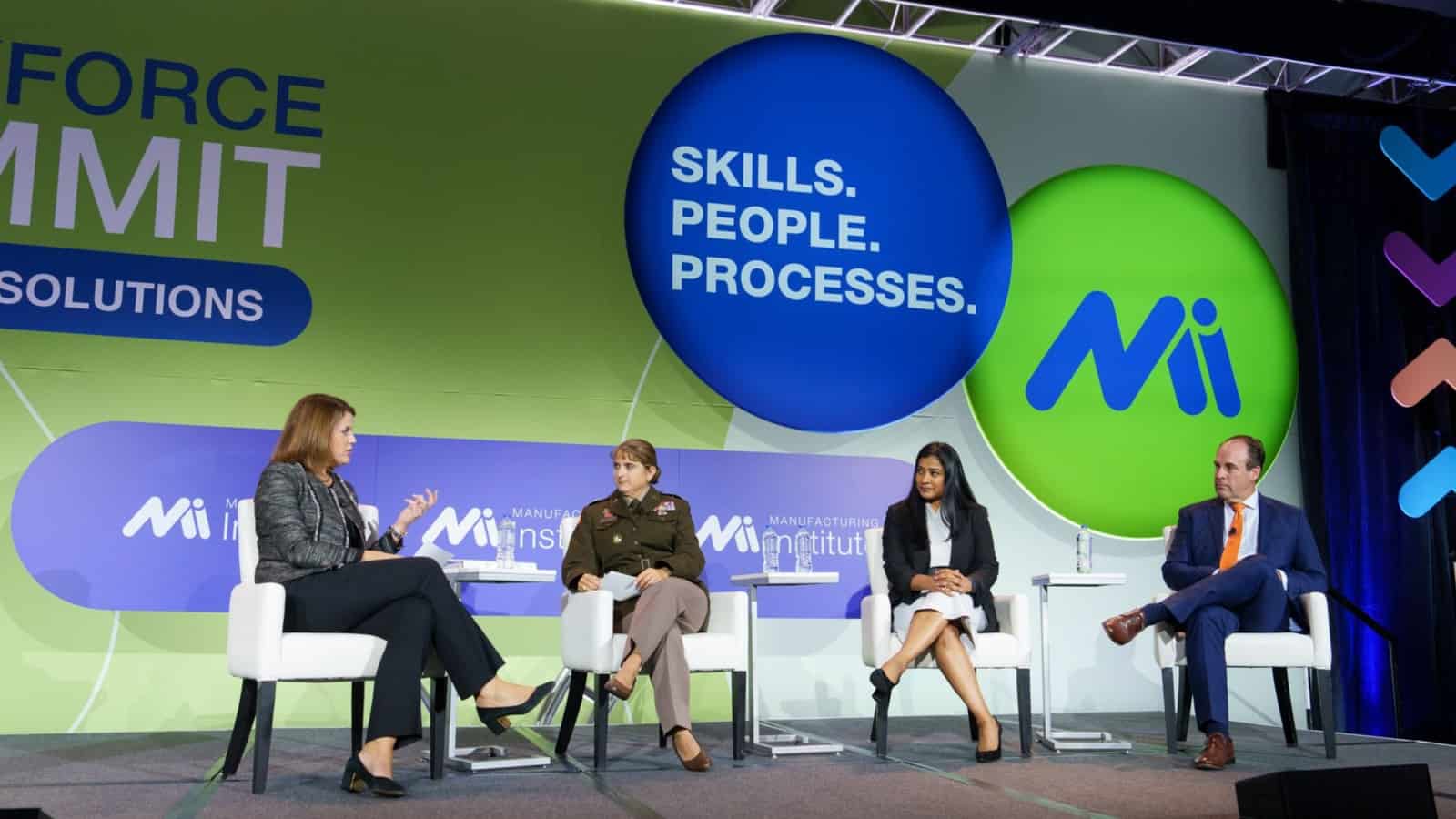
The best minds tackling manufacturers’ workforce challenges gathered in Atlanta last week to discuss hiring, retention, training and more. The Manufacturing Institute’s workforce summit convened almost 300 manufacturers, partners from education and training groups, philanthropy leaders and representatives from community-based organizations to share insights and brainstorm solutions.
The economic backdrop: Amid a persistently tight labor market, manufacturers are looking for immediate and long-term solutions to attraction and retention challenges.
- Chad Moutray, director of the MI’s Center for Manufacturing Research, provided the larger economic context for attendees, saying that “it’s not hard to be bullish about manufacturing. There continues to be signs of resilience in the sector despite a multitude of challenges.”
- “However, it exacerbates workforce issues, which remain the top concern of manufacturers, especially in a solid labor market,” he added.
Energizing connections: The MI was focused on helping participants learn from each other and form lasting and productive bonds.
- Organizations including the Georgia Association of Manufacturers, Siemens Foundation and River Parishes Community College sent leaders to facilitate conversations and share insights, while the generous support of WestRock, the Arconic Foundation and many others made the event possible.
- In breakout sessions, MI experts analyzed the key challenges facing manufacturers and shared proven workforce solutions like high school internships, female mentorship programs and regional sector partnerships.
Fresh insights: The two-day event was brimming with new ideas and fresh perspectives—too many to list in one article. Here is a brief sampling of the topics covered:
- People: The speakers highlighted manufacturers’ work to create positive company culture, prioritize flexibility and address issues like the shortage of child care. Maj. Gen. Kris Belanger also shared the importance of tapping into military talent pools like the U.S. Army Reserve. Programs like the MI’s Heroes MAKE America are making these important connections.
- Skills: To meet their needs for skilled workers, manufacturers are working with the MI, economic development boards and educational institutions to train the current and next generations of manufacturing employees. Workshop sessions showcased solutions from the MI’s FAME USA program, second chance hiring initiative and student engagement.
- Processes: Conversations in the popular “Brewing Solutions” rooms focused on ways manufacturers and workforce partners could tap into hidden populations, create attractive working environments and address policy barriers that restrict the adoption of innovative solutions.
Fearing you missed out? Don’t worry! There are plenty of ways you can plug into the cutting-edge work of the MI, the NAM’s workforce development and education affiliate.
- Get updates directly from the MI on the latest workforce insights and receive information about registering for the 2024 Workforce Summit.
- Join us as a sponsor for the 2024 Women MAKE Awards in Washington, D.C., on April 18 to support female manufacturing leaders and network with manufacturers and other workforce partners.
- Want more labor data and insights? Sign up for the MI’s comprehensive Workforce in Focus newsletter to stay up to date on the latest workforce trends.
The last word: “The MI’s unique positioning as both an insightful expert of emerging trends within the industry and an effective implementer of proven workforce solutions drives innovative problem-solving,” said MI President and Executive Director Carolyn Lee. “As we face structural workforce shortages, convenings like the MI’s Workforce Summit will continue to be crucial to build the types of partnerships and share important insights needed to ensure the readiness of the manufacturing workforce.”
Creators Wanted Tour Sets New Records at Ohio Finale
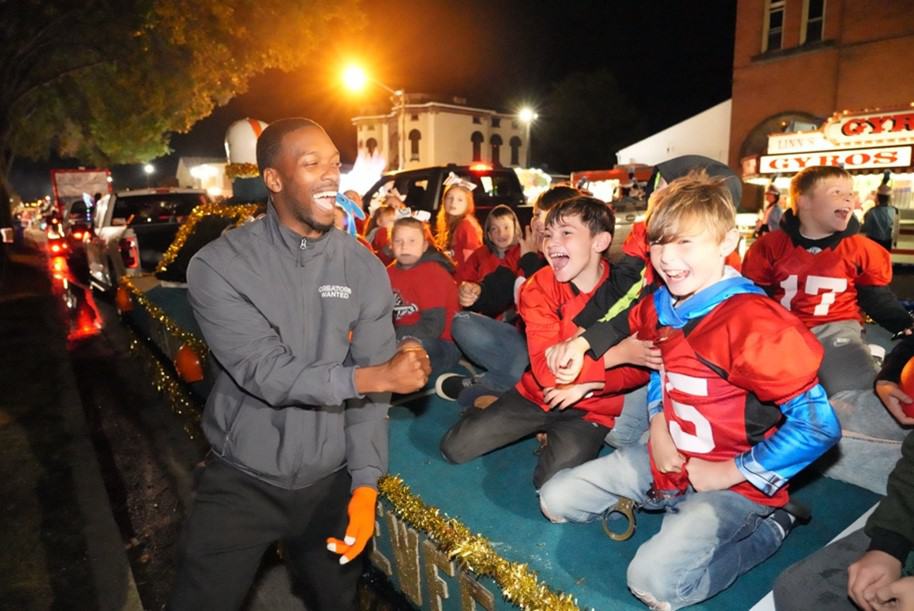
The size of the Great Pumpkin at the 116th annual Circleville Pumpkin Show—Ohio’s iconic fall fest—wasn’t the only record shattered there last week. The Creators Wanted Tour, a historic initiative of the NAM and the Manufacturing Institute to build excitement about modern manufacturing careers, reached new highs for engagement at its 20th and final stop.
Driving the news: The show attracted a crowd of more than 400,000, with “Creators Wanted” the most prominent brand seen and heard throughout the entire event. Of show attendees, the Creators Wanted activation pulled in a tour record of 2,024 participants comprising students and chaperones, taking the immersive experience’s overall total to just shy of 17,000 in two years.
- The digital campaign surrounding the stop collected an additional 110,000 email signups from students and career mentors interested in learning more about modern manufacturing careers, bumping the campaign’s email list above 1.6 million.
- The tour stop also saturated local news, with NBC4, 10TV CBS and WTTE Fox all sending live crews to the experience.
Why it matters: The stop, sponsored by the joint venture of Honda and LG Energy Solution and in partnership with the Ohio Manufacturers’ Association, comes at a critical time for the nation’s manufacturers, as they compete against other industries to fill available job openings today and win the interest of young people for the careers of tomorrow.
- For example, Honda and LG Energy Solution need to hire 2,200 workers within two years for their new electrical vehicle battery plant in Fayette County, Ohio.
- At the stop, Honda and LG Energy Solution joint venture associates were on hand to provide information about modern manufacturing careers generally and about opportunities at the EV plant specifically. The traffic around the experience was so robust that all recruiting materials were exhausted before the event wrapped up.
Zoom in: On Saturday night, the Creators Wanted team also reinforced the industry’s commitment to communities by leading the largest parade of the show, in front of tens of thousands who heard the public address system broadcast the industry’s call for creators and highlight the campaign’s career resources at CreatorsWanted.org.
- NAM President and CEO Jay Timmons, a proud son of Circleville and Chillicothe, Ohio, also addressed an assembling of Ohio’s young women leaders and their families, emphasizing their capacity to make a difference in manufacturing careers while at the same time noting mentorship resources available to them through the MI’s Women MAKE America initiative.
- The tour’s innovative approach received strong approval from state and local officials, strengthening the campaign’s ability to reach students and constituents. Ohio Treasurer Robert Sprague, State Auditor Keith Faber, State Sen. Michele Reynolds and State Reps. Brian Stewart and Mark Johnson, among others, stopped by to see what the buzz was all about.

Tour highlights: Beyond the pumpkin-centric celebrations, the tour also took its message of opportunity and rewarding careers to the new, state-of-the-art Logan Elm School, a combined elementary, middle and high school, as well as to students of the Ohio State University’s Center for Design and Manufacturing Excellence.
- At Logan Elm, Timmons was joined by OMA President Ryan Augsburger, Honda and LG Energy Solution joint venture representative and engineer Sandip Suvedi and representatives from Sofidel America. Honda engineer Meredith Reffey, who is now Honda America’s department lead for workforce partnership, joined Timmons and MI President and Executive Director Carolyn Lee at OSU. (The MI is the workforce development and education affiliate of the NAM.)
The big number: Post-tour surveys show that 84% of participants now view the manufacturing sector more positively.
On the record: “Closing our expansive 20-stop, 25,000+ mile tour at such a dynamic event serves as a potent reminder: the heartbeat of manufacturing lies within our communities,” said Timmons. “It’s in the eyes of the young dreamers in the crowd, the hands of our diligent staff and the spirits of every individual who championed our journey.”
- “The Creators Wanted Tour helped us shift perceptions, but we also know the hard work of continuing to improve perceptions and build the workforce of the future goes on,” said Lee. “The Manufacturing Institute, with our scaled-up efforts to drive solutions with manufacturers and across the industry and the robust digital network and resources the campaign has created will build on the tour’s momentum to do even more.”
The last word: “Our aspiration with Creators Wanted was straightforward yet audacious: to transcend traditional boundaries, step out of the corridors of Washington, D.C., and engage directly with communities across the country,” said NAM Managing Vice President of Brand Strategy Chrys Kefalas. “That’s exactly what we and the manufacturers who joined this tour and campaign did, and we’ve made a lasting positive difference in people’s lives that will outlive this tour and help the industry for decades to come.”
Creators Wanted Tour Sets New Records at Ohio Finale

The size of the Great Pumpkin at the 116th annual Circleville Pumpkin Show—Ohio’s iconic fall fest—wasn’t the only record shattered there last week. The Creators Wanted Tour, a historic initiative of the NAM and the Manufacturing Institute to build excitement about modern manufacturing careers, reached new highs for engagement at its 20th and final stop.
Driving the news: The show attracted a crowd of more than 400,000, with “Creators Wanted” the most prominent brand seen and heard throughout the entire event. Of show attendees, the Creators Wanted activation pulled in a tour record of 2,024 participants comprising students and chaperones, taking the immersive experience’s overall total to just shy of 17,000 in two years.
- The digital campaign surrounding the stop collected an additional 110,000 email signups from students and career mentors interested in learning more about modern manufacturing careers, bumping the campaign’s email list above 1.6 million.
- The tour stop also saturated local news, with NBC4, 10TV CBS and WTTE Fox all sending live crews to the experience.
Why it matters: The stop, sponsored by the joint venture of Honda and LG Energy Solution and in partnership with the Ohio Manufacturers’ Association, comes at a critical time for Ohio and the nation’s manufacturers, as they compete against other industries to fill available job openings today and win the interest of young people for the careers of tomorrow.
- For example, Honda and LG Energy Solution need to hire 2,200 workers within two years for their new electrical vehicle battery plant in Fayette County, Ohio.
- At the stop, Honda and LG Energy Solution joint venture associates were on hand to provide information about modern manufacturing careers generally and about opportunities at the EV plant specifically. The traffic around the experience was so robust that all recruiting materials were exhausted before the event wrapped up.
Zoom in: On Saturday night, the Creators Wanted team also reinforced the industry’s commitment to communities by leading the largest parade of the show, in front of tens of thousands who heard the public address system broadcast the industry’s call for creators and highlight the campaign’s career resources at CreatorsWanted.org.
- NAM President and CEO Jay Timmons, a proud son of Circleville and Chillicothe, Ohio, also addressed an assembling of Ohio’s young women leaders and their families, emphasizing their capacity to make a difference in manufacturing careers while at the same time noting mentorship resources available to them through the MI’s Women MAKE America initiative.
- The tour’s innovative approach received strong approval from state and local officials, strengthening the campaign’s ability to reach students and constituents. Ohio Treasurer Robert Sprague, State Auditor Keith Faber, State Sen. Michele Reynolds and State Reps. Brian Stewart and Mark Johnson, among others, stopped by to see what the buzz was all about.
Read the full story here.
Students Experience Manufacturing at MFG Day Kickoff
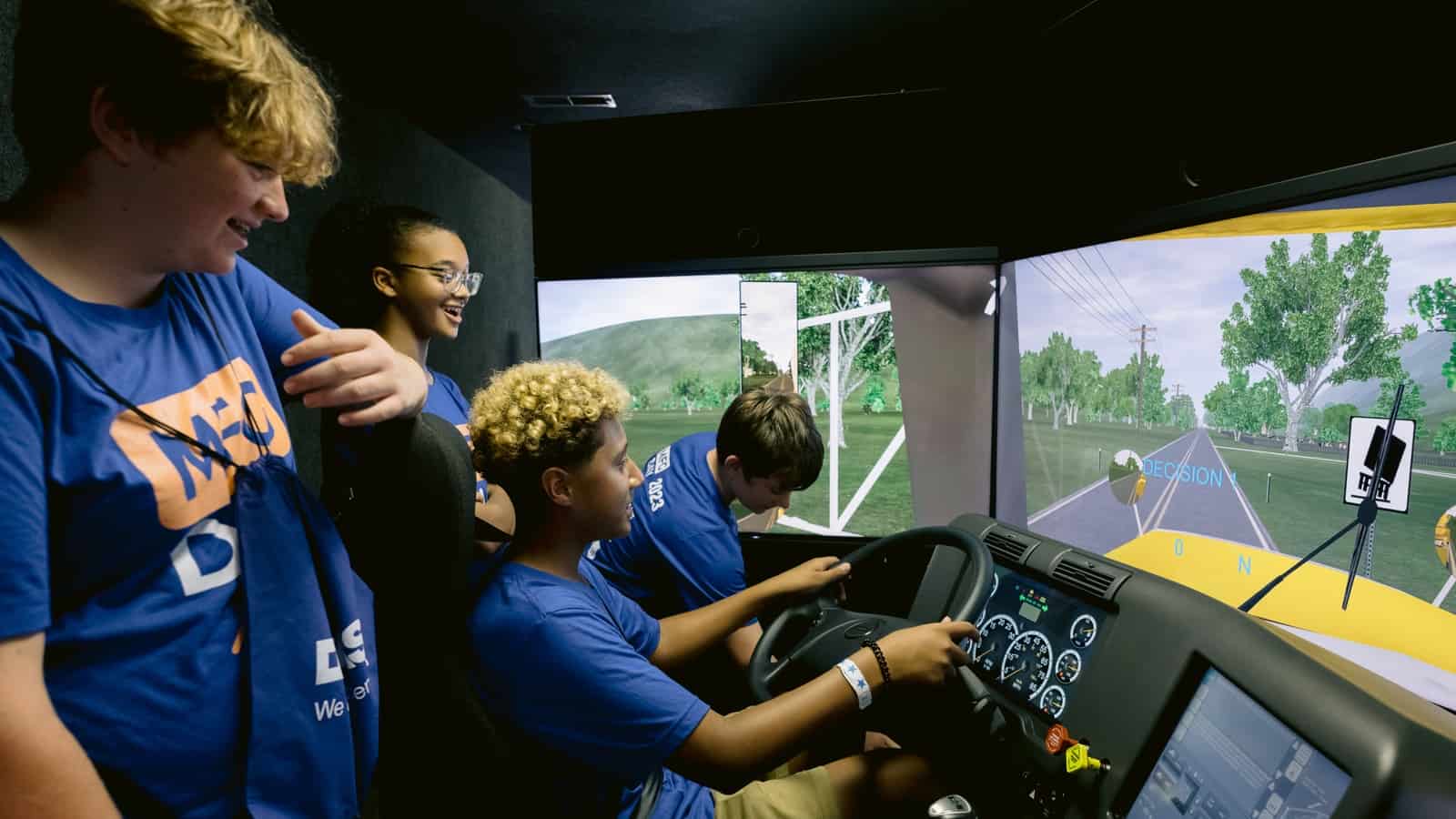
To say there was a lot for students to see and do at chemical manufacturer BASF’s MFG Day event at River Parishes Community College last Friday would be an understatement.
- The activities at the Gonzales, Louisiana, college were made possible by a partnership between with the school and the Manufacturing Institute, the NAM’s 501(c)3 workforce development and education affiliate.
A rewarding experience: Hundreds of middle and high school students gathered on the campus for a chance to learn about manufacturing and how rewarding careers in the industry can be.
- Representatives from approximately 10 manufacturing companies and various departments at the college set up demonstration and interactivity stations where the students could find out more about the different careers and training programs available in their community.
- BASF was platinum sponsor of this year’s MFG Day, a flagship initiative of the Manufacturing Institute that introduces students, parents and educators to the manufacturing industry.
Hands-on activities: Students got the chance to conduct science experiments (including one in which they made putty and learned how different chemicals react to create the substance), simulate firefighting, experience virtual and augmented reality welding systems, try out process control simulators and more.
Readying the future workforce: Partnerships between academia and industry are helping to deliver the right workers to the right jobs, Louisiana Economic Development Secretary Don Pierson told the students and other audience members at the event.
- The LED’s “FastStart workforce development [program], that integrates with community colleges and four-year universities across our state, help[s] guide and then make the recipe to deliver exactly what BASF needs, exactly what Shell needs, exactly what ExxonMobil needs” in its workforces, Pierson said.
- Said A. Denise Graves, Ascension Public Schools assistant superintendent, “[Today] is an opportunity for our children because they’re going to go home and they’re going to share this information [about manufacturing careers], they’re going to share this day with others.”
A guiding path: Louisiana State Rep. Ken Brass, who is also an electrical engineer at BASF, described his journey into manufacturing.
- “I would like to publicly and personally thank BASF and the Manufacturing Institute for investing in me and my career,” he said. “It wasn’t too long ago [that] I was a senior at a nearby high school … and I was wondering [about] the path forward for my life after high school.”
- “I attended a STEM event which led me to attend Southern University and ultimately receive a bachelor’s degree in engineering with a minor in mathematics,” he continued. “Upon graduation, BASF took a chance on me. I have now been at the company for over 20 years, which has allowed me the opportunity to continue to live in my hometown of St. James and to work in a nearby parish.”
Changing perceptions: Activities such as those at BASF’s MFG Day event allow students to get a real taste of modern manufacturing and perhaps take career paths similar to Brass’s, MI Executive Director Carolyn Lee said.
- “MFG Day … is designed to give manufacturers a platform to come together to address one of the biggest challenges we all face each and every day—and that’s to change the perception of our careers,” Lee said.
- “We’re showing students what manufacturing really looks like today and how operators get to work … in clean, bright, sleek technology-driven facilities while accessing state-of-the-art equipment and tools, including robotics and augmented reality, drones and digital twins, just to name a few.”
A bright future: “We know that by building an interest in STEM careers today, we’ll create the sustainable solutions [we need] for tomorrow,” said BASF Senior Vice President and General Manager Jerry Lebold. “It’s through these kids and … efforts like this with RPCC that I know that future is going to be more sustainable and it’s going to be very bright.”
